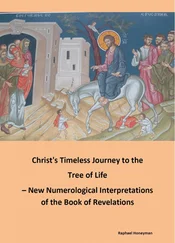That was not evident in 1957–9. None the less John Boyd-Carpenter, the Minister for Pensions and National Insurance, was forced to respond in the face of these challenges and the escalating crisis over how to pay for pensions. Initially he dismissed Titmuss and his colleagues as ‘a skiffle-group of professors’ who had got their sums wrong. 73When the sums broadly held up, he and others attacked the scheme as extravagant and inflationary, arguing that higher contributions by employers would mean higher prices – a point Beveridge drove home from his seat in the Lords as he spelt out his anathema to this departure from his principles. 74Boyd-Carpenter’s final response was a vastly more limited scheme to introduce ‘graduated’ pensions. Above a low threshold, employees were to pay a percentage contribution on their earnings up to a £15 a week ceiling. This earned them ‘bricks’ of extra pension: 6d. (2.5P) a week for every £7.50 paid by a man and £9 by a woman. This was not strictly earnings-related, and no formal provision was made for up-rating the graduated pension alongside inflation. Younger workers were thus faced with the prospect that the ‘sixpenny bricks’ they had paid for early in life would be worth next to nothing when they retired. The scheme was presented firmly as an alternative for those who lacked occupational cover, and the benefits were deliberately limited to avoid competition with occupational schemes. For good measure employers were allowed to contract out on certain conditions. Finally, no secret was made of the fact that the higher contributions were intended at least as much to put the national insurance fund back into balance as they were to produce any sort of pensions revolution. The 1958 White Paper stated bluntly as its first objective: ‘to place the National Insurance scheme on a sound financial basis’. 75The White Paper also formally abandoned Beveridge’s plan of relating contributions to the final cost of providing pensions. Instead, Boyd-Carpenter said, contributions would be set no higher than needed to balance income with expenditure as the scheme developed.
The limitations of Boyd-Carpenter’s scheme brought fierce cross-party argument at the 1959 election. Labour branded it ‘a swindle’ and the minister ‘a good bargain’. He in turn charged that Labour’s plan was ‘financially unsound’. The issues were far too complex, however, to make much impact on the electorate and in 1961 the minister’s 1959 legislation came into force.
Конец ознакомительного фрагмента.
Текст предоставлен ООО «ЛитРес».
Прочитайте эту книгу целиком, купив полную легальную версию на ЛитРес.
Безопасно оплатить книгу можно банковской картой Visa, MasterCard, Maestro, со счета мобильного телефона, с платежного терминала, в салоне МТС или Связной, через PayPal, WebMoney, Яндекс.Деньги, QIWI Кошелек, бонусными картами или другим удобным Вам способом.
![Nicholas Timmins The Five Giants [New Edition]: A Biography of the Welfare State обложка книги](/books/701739/nicholas-timmins-the-five-giants-new-edition-a-cover.webp)











